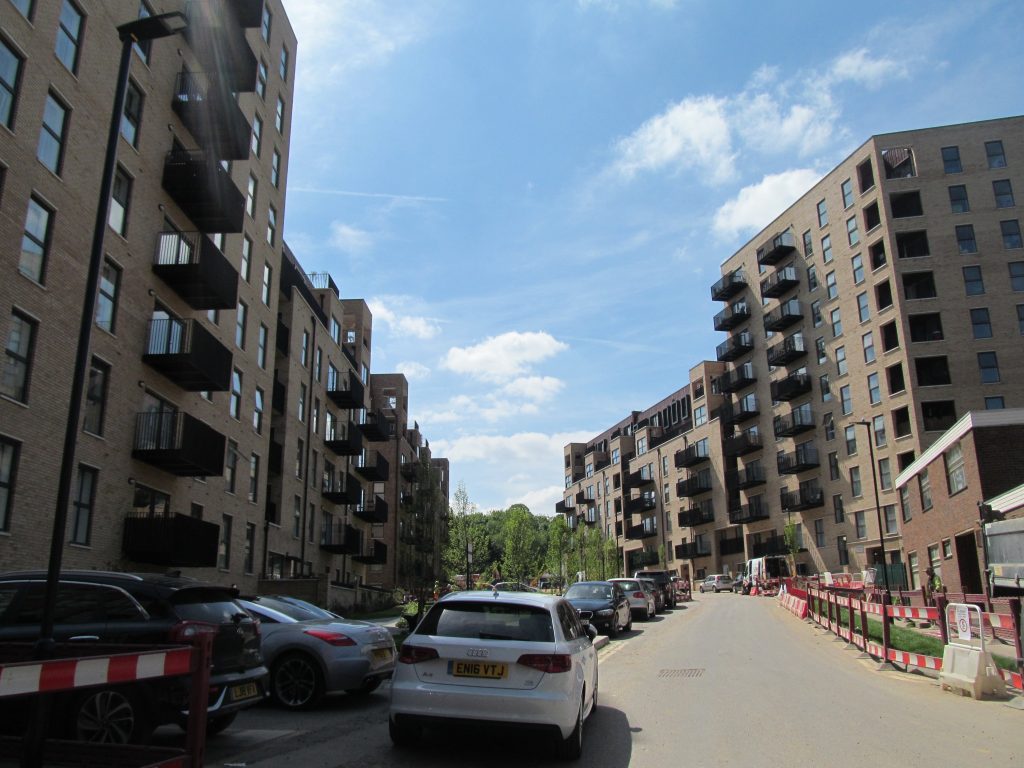London housing latest: Affordable homes total just 15% across London
The Greater London Authority have released the newest monitoring report looking at services and housing being built across the capital.
It’s a chunky old document weighing in at over 150 pages and the housing figures are way behind goals. A target number of 17,000 net affordable new homes was missed by a long, long way. Only 4,703 affordable homes were completed.

That was out of 32,000 homes built – meaning affordable homes comprised just 15 per cent of the total. The figures are so poor in the report I suspected a typo at first.
This wasn’t a one-off however. Between 2015/16 and 2017/18 “affordable housing
output averaged 17 per cent of total provision”.

As for overall homes, 32,000 were built last year against a target of 42,000 to keep up with London’s growing population and demographic changes.
Despite being below target the three-year average on housing starts fell again for the second year in a row. It’s unlikely targets for either total homes built or affordable homes will be anywhere near met without a substantial increase in public sector involvement in housing.

In other areas twice as much industrial land was lost against targets. 73 hectares versus 36.7 in the London Plan target.

In terms of transport, road traffic saw a slight increase against a target of no growth. Traffic levels were at the highest since at least 2011.
Employment
Employment is covered in a bizarre way by placing all BAME groups into one pot and all those from a white background into another. An extremely limiting way of doing things as we know there’s vast differences in educational attainment and employment within both BAME groups and within the white population.
For example, according to the ONS, within the Asian population across the UK people from an Indian ethnic group background had “the highest hourly pay on average earning £13.14, while people from the Pakistani/Bangladeshi ethnic groups earned the lowest, at £9.52 on average”.

Within the white population there is a vast gulf between white working class and white middle class both with wages and exam grades. White working class and Black Carribbean have some of the lowest GCSE grades of all groups. Black African achieve far better grades than Black Caribbean for example, and white middle class are near the top along with those from Indian and Chinese backgrounds.
Lumping all white together and all BAME together is limiting and far from useful. It hides problems within certain groups.
For a 150 page report such limited analysis doesn’t tell us much.
I’ll write follow-up posts breaking down the data by borough in coming days.
Running a site alone takes time and a fair bit of money. Adverts are far from enough to cover it and my living costs as a private renter.
You can support me including via Paypal here Another option is via Patreon by clicking here You can also buy me a beer/coffee at Ko-fi here There's also a Facebook page for the site here Many thanks






If anything the report will only reinforce old stereotypes about race and families while doing the least advantaged members of society a disservice. I’d be extremely interested in seeing your breakdowns by Borough.
Totally agree Charles. Pay diffencences in the public sector however are very rare as you get paid an hourly rate for your grade agreed by your employer and the Unions. The only difference being many people get paid incriments (spine points) depending on length of service.
I have given an example below.
You may have a pay grade of £20,000. – £ 25,000. The £ 25,000 being the top of the pay scale for that grade.
So someone who has been employed in that pay grade for say 5 years or more should be on the top pay scale be paid a salary of £25,000. A new starter in year one should be on £ 20,000 and some one with 3 years service at the grade should be on £23,000 if that makes senses.
With regard to affordable housing and social housing in particular Local Authorities do not really want large developments of purely social housing developments anymore, This seems to be happening all over the country.
Otherwise when Local Authorities are discussing planning applications and passing planning applications they would ensure that some developments planning would only be granted on the condition the new developments being built is social rented housing at affordable rents.
This very rarely happens these days. Local Authorities and Greenwich in particular have sold sites they owned on to private developers rather than building social rented housing on the sites themselves to house people from the housing waiting list. Instead they have choseng to purchase a few homes at market value which costs hundreds of thousands pounds for each property they purchase just to house an handful of people from the ever growing housing waiting list.
I believe Local Authorities need to get back to building their own social rented housing at affordable rents. This could be joint ventures with local Housing Association and Charity Housing schemes who offer temporary homes to our most vulnerable people.
You are right about local authorities not wanting to deal with those on the waiting list, largely low waged or on benefits.
I had an interesting discussion with one of the ward councillors where I live in Lewisham about developers and planning applications. I asked why planning permission cannot be refused for developments who have little or no social/affordable content, and he said that the developer could argue that the council was taking an ideological stance which is illegal.